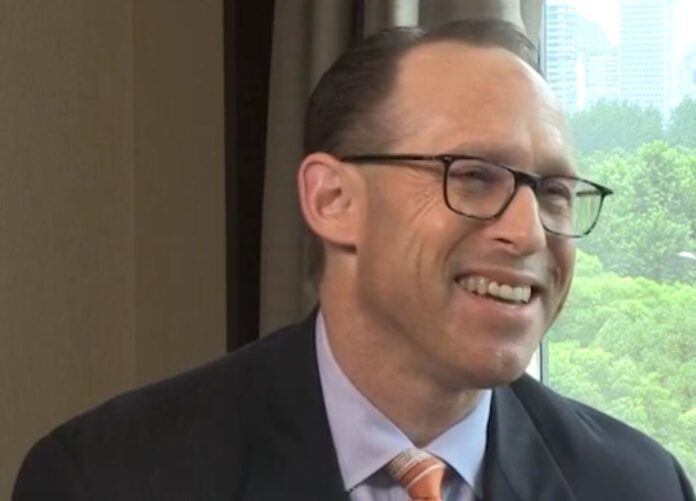AT&T is seen by many as the domestic investment leader in the “internet of things” and virtualization of its network. The telecom company also has its sights set on “5G” technology and what it can do to prepare to bring these future game changing technologies to customers.
At Mobile World Congress Shanghai, Mobile World Live caught up with Glenn Lurie, president and CEO of mobility and customer operation at AT&T, to talk about the company’s investment in IoT and 5G.
The next network
“I don’t think we were quiet [on 5G],” Lurie said. “I think the one thing that the industry has done in the past that we were hoping wouldn’t happen is a lot of hype, and hopefully not overpromising and underdelivering.”
In February, AT&T laid out its plans to trial a 5G network in Austin, Texas. In a Federal Communications Commission filing, the company asked for a license to conduct trials using spectrum in the 3.4-3.6 GHz, 3.7-4.2 GHz, 14.5-15.35 GHz and 27.5-28.5 GHz bands. The company said it would use “experimental equipment” in support of potential (5G) multigigabit per second applications for fixed and mobile wireless communication networks at higher transmission rates and lower latency than currently available.
“5G is fun to talk about, and what we said recently is that we are absolutely going to test and trial,” Lurie said. “In fact, we announced some testing and trialling we are doing in Austin, Texas around understanding 5G. There is a lot we have to learn, I mean, we are not going to see what 3GPP comes out as standards until 2018 sometime. We are not going to see a really true 5G network until 2020. So the key for us is to learn, to prepare our network for 5G.”
To cope with increasing IP endpoints and network traffic, AT&T has a goal to virtualize 75% of its network by 2020, following its Domain 2.0 initiative. It is currently ahead of game, hitting 5.7% last year.
“One of the things we have talked a lot about is, we are leading the world in virtualizing our network. We are leading the world in really moving from a hardware based network to a software based network.”
On where the U.S. stands with 5G
While U.S. government might be behind the curve when it comes to understanding the implications of IoT, U.S. industries are doing all they can to prepare for its launch.
“The U.S. can be proud of one thing: we are investing heavily. The key element on anything you are going to do in 5G is going to be spectrum. Without question, we are going to need more spectrum. Everyone is talking about the incredible growth in video. When you get to a 5G type network, we are going to have more around small cell and millimeter wave, those are going to take some additional spectrum assets. Without question, U.S. is on the right track.”
AT&T’s IoT future
AT&T currently has more than 8 million connected cars on its network and plans to continue its expansion into the automotive industry.
“The car is an incredible place. We believe it is that next great device in your life,” Lurie said. “Through technology, first and foremost, we have the ability to make it safer. We have the ability to reduce distracted driving. We have the ability to, as we head forward, vehicle to vehicle communication and vehicle to infrastructure communication, those cars all talking to each other to help traffic to reduce accidents, and make things more efficient. Those opportunities are incredible.”
In January, RCR Wireless News took a trip to AT&T’s Midtown Atlanta Drive Studio, where the carrier works with automakers to build connected cars.
“The future of the car is it’s a smartphone with four wheels, that car is software based,” Lurie explained. “It is going to need to be updated on a regular basis, we are the network behind that as well. We see the car as a phenomenal opportunity. We have relationships with 19 brands. We see it as a really big opportunity as a car, we also see it as an opportunity in the ecosystem around smart cities and connecting to those cities as well as connecting to your home, your smart home and delivering an overall connected customer experience.”
We will have to wait until 2020 to really start seeing who will come out ahead when it comes to deployment of 5G and IoT networks, but the CEO has made it clear that AT&T is doing what it can to prepare for that day.

